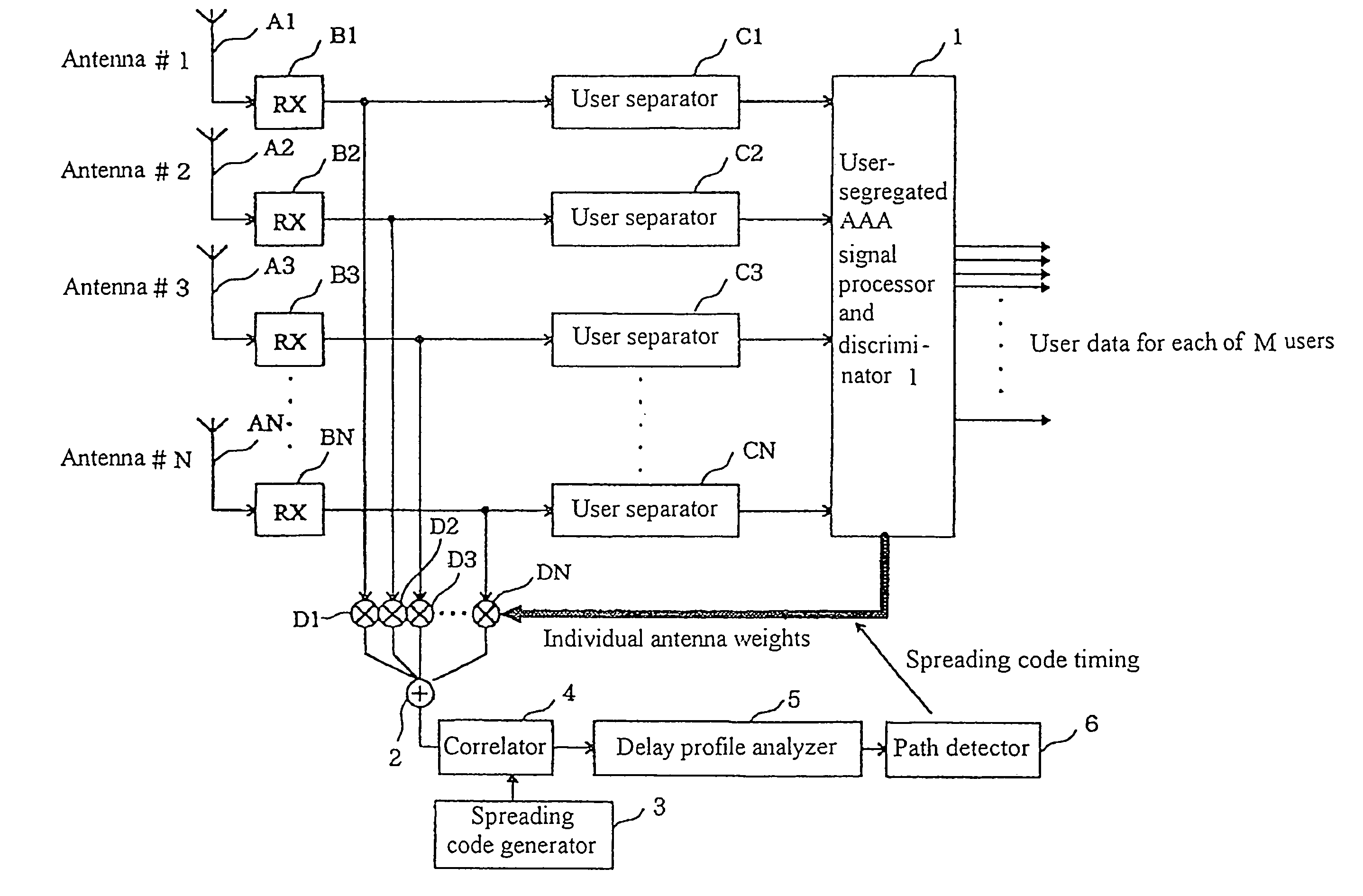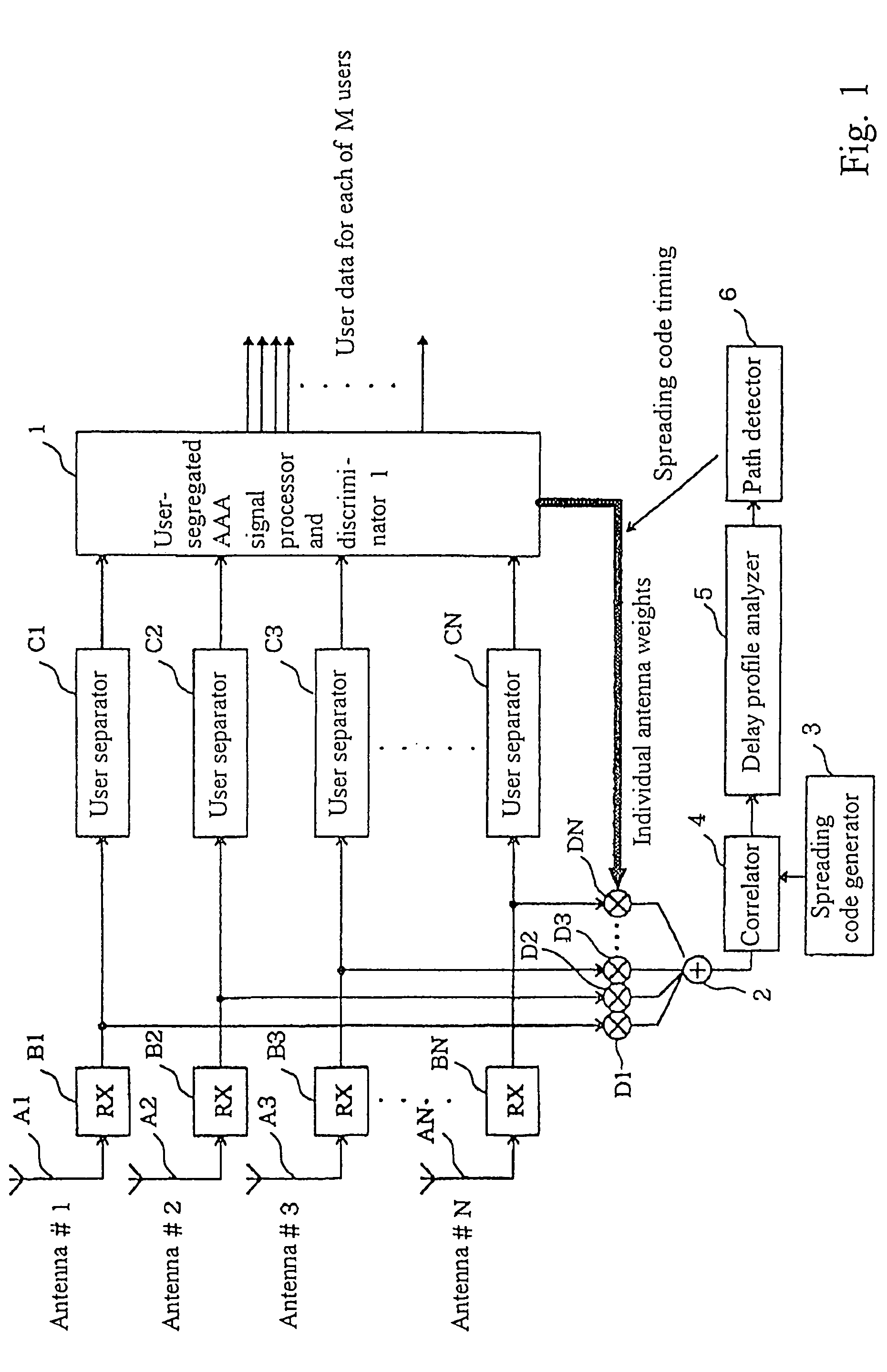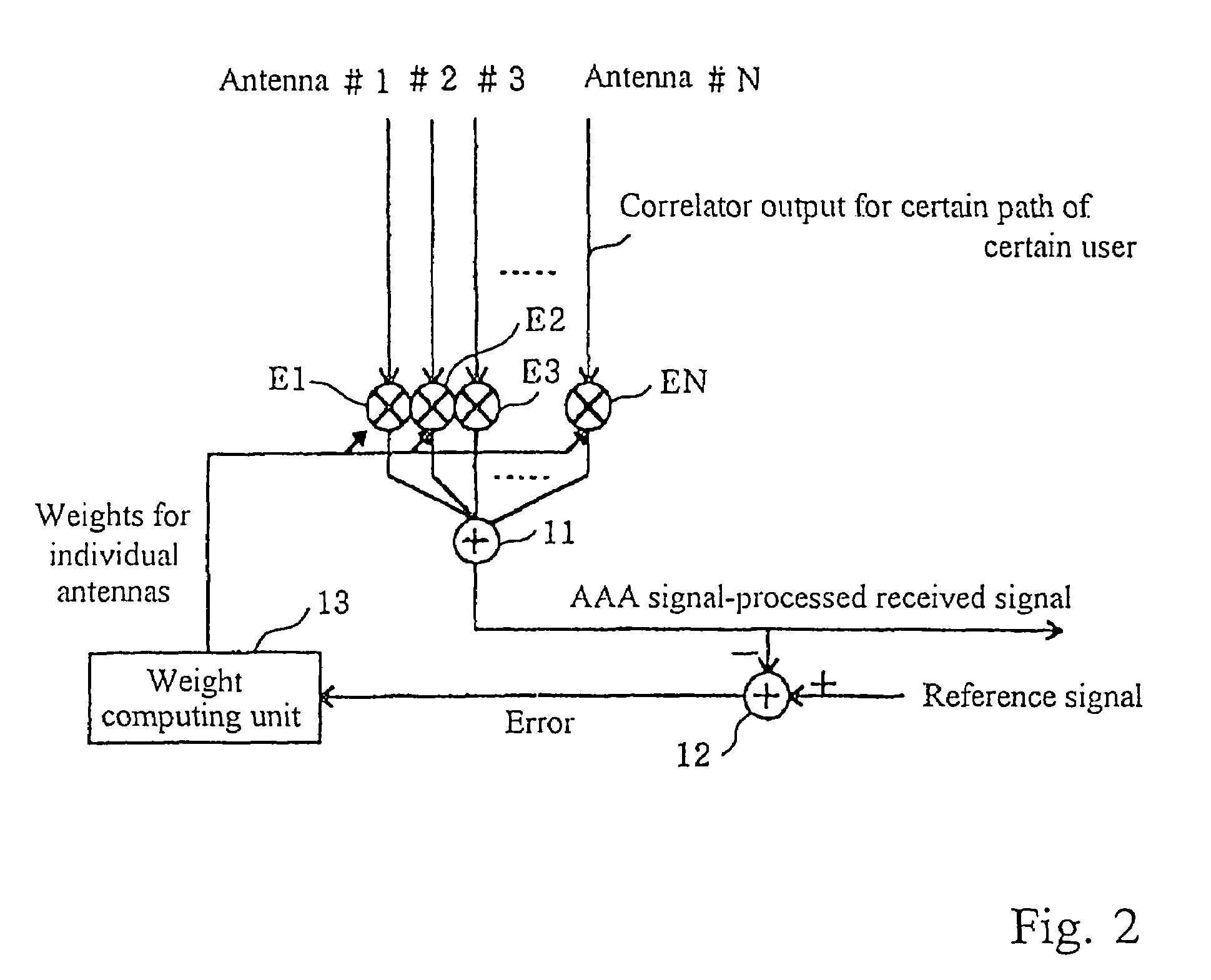Receiver
a receiver and receiver technology, applied in the field of receivers, can solve the problems of low path detection accuracy of path detectors b>47/b>, noise and interference of autocorrelation peak, and achieve the effect of enhancing the path detection accuracy of received signals
- Summary
- Abstract
- Description
- Claims
- Application Information
AI Technical Summary
Benefits of technology
Problems solved by technology
Method used
Image
Examples
first embodiment
[0100]A CDMA base station equipped with a CDMA receiver that is this invention will be explained first.
[0101]FIG. 1 shows the configuration of a receiver with path detection circuit (path detector) used in the CDMA base station with adaptive array antenna of the example that will be explained here.
[0102]The illustrated receiver comprises N number of receive paths composed of N number of antennas A1–AN constituting an adaptive array antenna, N number of receiver units (RX) B1–BN each associated with one of the antennas A1–AN, and N number of user separators C1–CN each associated with one of the antennas A1–AN (and one of the receiver units B1–BN). The illustrated receiver also includes a user-segregated AAA signal processor and discriminator 1 common to the N number of receive paths.
[0103]The illustrated receiver is further equipped with a path detection circuit composed of N number of complex multipliers D1–DN, a synthesizer 2, spreading code generator 3, correlator 4, delay profile...
second embodiment
[0142]A CDMA base station equipped with CDMA receiver that is the present invention will now be explained.
[0143]The receiver installed in the CDMA base station of this embodiment is characterized in how the receive weights are imparted from the user-segregated AAA signal processor and discriminator 1 to the complex multipliers D1–DN of the path detection circuit. As the receiver of this embodiment has the same configuration as that of the first embodiment shown in FIG. 1, no detailed explanation of the configuration will be given.
[0144]The features that characterize the configuration and operation of this embodiment will now be explained.
[0145]As was explained with regard to the first embodiment, in adaptive array antenna signal processing, sets of receive weights can be calculated for the incoming waves arriving via multiple paths (e.g., four sets can be calculated when there are four antennas and three paths). On the other hand, since the path detection circuit operates in the sta...
third embodiment
[0170]A CDMA base station equipped with CDMA receiver that is the present invention will now be explained.
[0171]The receiver installed in the CDMA base station of this embodiment is characterized in the point that the contribution of the complex multipliers to overall physical size is reduced by time-divided use of the complex multipliers for adaptive array antenna signal processing in the path detection circuit. Aside from this feature, the configuration of the receiver of this embodiment is the same as that of the receiver of the first embodiment shown in FIG. 1. Constituent portions which are identical with those of the first embodiment will not be explained again here.
[0172]The configuration and operation of the path detection circuit of this embodiment will be explained.
[0173]When a complex multiplier complex-multiplies a multiplier coefficient and a multiplicand coefficient it generally has to perform four multiplications because the multiplication coefficient and the multipli...
PUM
 Login to View More
Login to View More Abstract
Description
Claims
Application Information
 Login to View More
Login to View More - R&D
- Intellectual Property
- Life Sciences
- Materials
- Tech Scout
- Unparalleled Data Quality
- Higher Quality Content
- 60% Fewer Hallucinations
Browse by: Latest US Patents, China's latest patents, Technical Efficacy Thesaurus, Application Domain, Technology Topic, Popular Technical Reports.
© 2025 PatSnap. All rights reserved.Legal|Privacy policy|Modern Slavery Act Transparency Statement|Sitemap|About US| Contact US: help@patsnap.com



